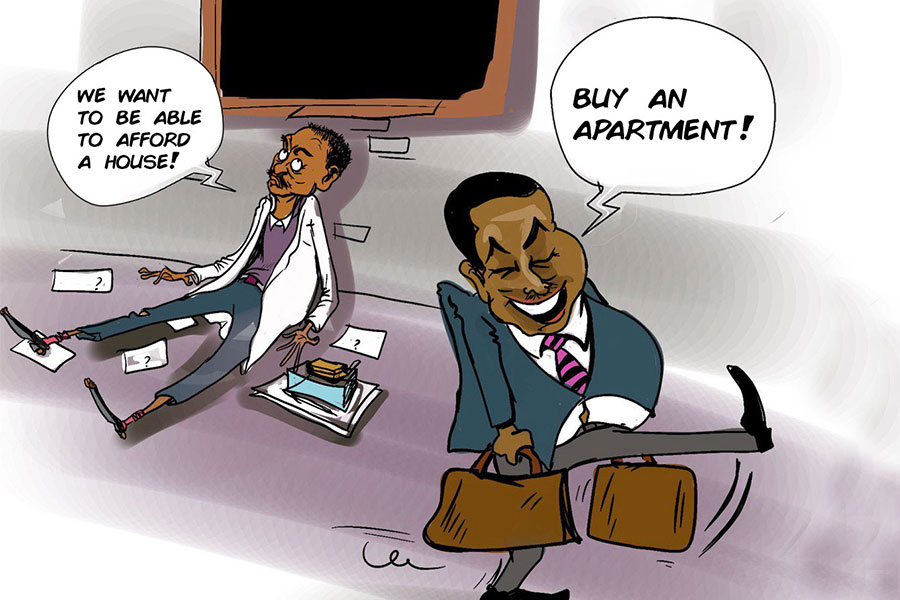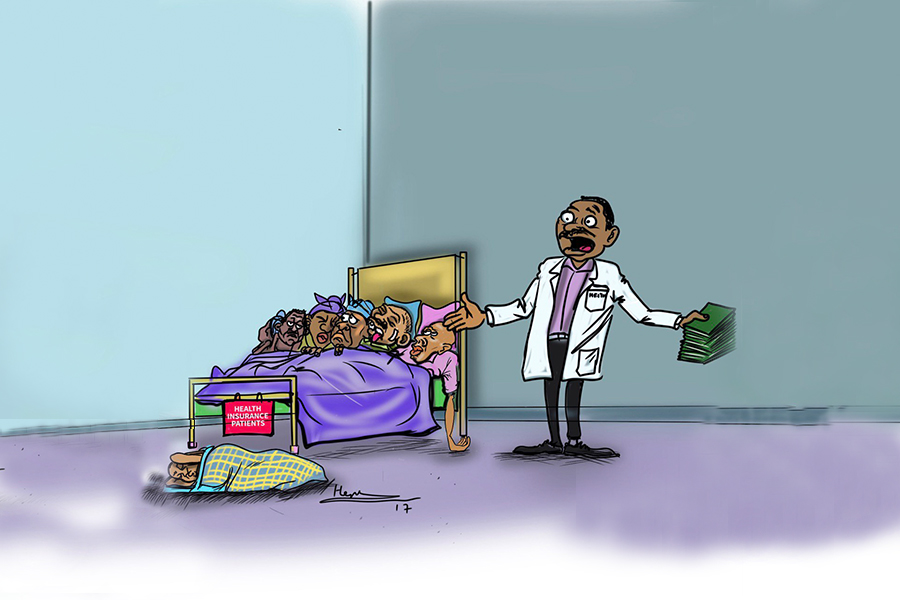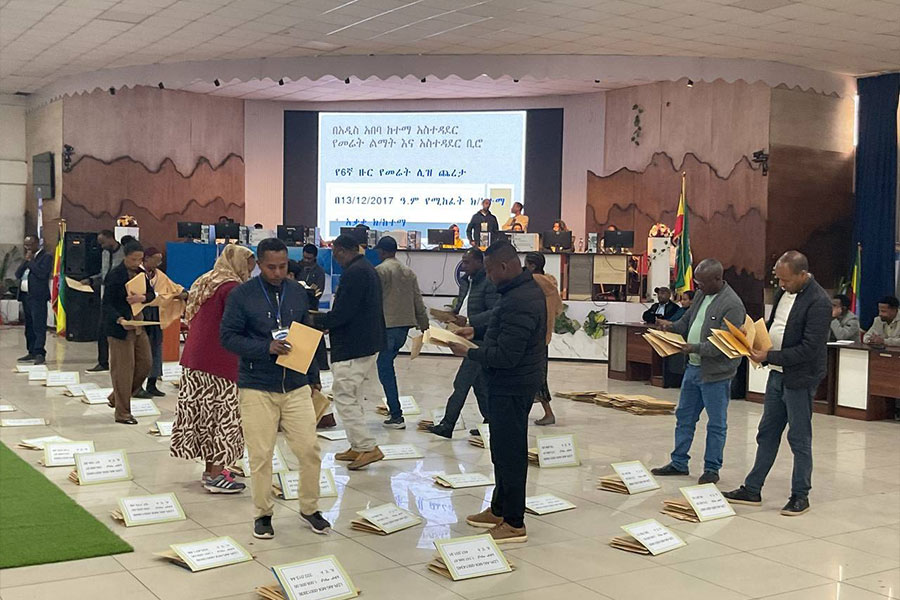
Editorial | Jun 07,2025
Nov 9 , 2024
By Hippolyte Fofack
The development interventions maintained by the "Global North" still follow the prevailing top-down, one-size-fits-all approach, especially when it comes to climate finance. Despite contributing the least to the climate crisis, non-Global North countries are on the receiving end of projects designed to reduce greenhouse gas emissions, writes Hippolyte Fofack, a research associate at the Harvard University Center for African Studies, in this commentary provided by Project Syndicate (PS).
In 2011, the Busan Partnership Agreement recommended a shift toward increased national ownership of the development agenda as part of the international drive for more effective development policies. The agreement was a welcome recognition that lower-income countries were more likely to improve resource allocation and achieve sustainable growth when they set their development priorities.
Over a decade later, the prevailing top-down, one-size-fits-all approach to development interventions remains stubbornly intact. This is particularly true for climate finance, which tends to be largely earmarked for projects aimed at reducing greenhouse gas (GHG) emissions, including in countries that have contributed the least to the climate crisis. For example, 58pc of the 83.3 billion dollars in climate finance that the Global North delivered to developing countries in 2020 went toward such mitigation initiatives.
The most pressing challenge facing low-income countries is to bolster the capacity of governments and societies to endure and adapt to the adverse effects of global warming. But only 34pc of climate-finance flows to low-income countries, totalling 28.6 billion dollars, went toward adaptation measures in 2020, and that fell to around 27pc in 2021 and 2022 (totalling 24.6 billion dollars and 32.4 billion dollars, respectively). These sums fall far short of the estimated 160 billion to 340 billion dollars needed annually for climate change adaptation in developing countries.
Nearly three-quarters of the climate finance provided to developing countries between 2016 and 2022 came from loans, which could further exacerbate macroeconomic instability and debt vulnerabilities. Close to 60pc of these countries are already confronting or at high risk of debt distress, owing to the "original sin" of foreign borrowing together with growth-crushing interest rates that dramatically increase the fiscal incidence of external debt.
Global investors are drawn to climate mitigation projects because they generate more immediate returns, compared to the longer-term payouts of investments in adaptation. But this skewed approach fails to account for the asymmetric nature of climate change: even though the Global North has historically caused the majority of greenhouse emissions, the Global South, where average annual temperatures in most countries have largely exceeded the upper threshold for life of 24° Celsius, has suffered the worst effects, and is especially vulnerable to further projected increases in average temperatures.
It is hard to imagine how the effects of climate change could be much worse for low-income countries.
In 2022, flooding submerged one-third of Pakistan, killing 15,000 people, forcing more than nine million into poverty, and generating economic losses that amounted to 2.2pc of GDP. In 2023, East Africa – despite contributing only 0.1pc of global GHG emissions – experienced extreme droughts that decimated around 7.4 billion dollars worth of livestock, fueled an alarming hunger crisis, and exacerbated poverty.
The Global North’s failure to take responsibility for rising temperatures and consider vulnerable countries’ specific needs risks further magnifying the climate emergency’s already high economic and social costs in these countries.
Crucially, making progress on adaptation does not depend entirely on successful mitigation measures – the relationship is not unidirectional. Some adaptation initiatives, such as improved building insulation and energy-conservation measures that reduce the need to use coal-fired power plants, can turbocharge mitigation efforts. Unless we adapt our behaviour and systems to moderate the devastating effects of GHG emissions, the social and economic costs of climate change will continue to rise, hitting the most vulnerable countries hardest.
More broadly, building sustainable and resilient infrastructure would mitigate countries’ vulnerability to adverse climate shocks and other related risks. Such infrastructure would not only reduce the direct fiscal impact of such shocks and contingent liabilities that could pose a threat to macroeconomic stability and debt sustainability but could also enable energy-poor countries to leapfrog into a new era of clean power, accelerating the transition to net-zero emissions.
Increasing coordination between adaptation and mitigation efforts could make them more cost-effective and appealing to investors, thereby catalysing more climate adaptation financing in the Global South. At the same time, mobilising more private capital for adaptation requires increasing the number of climate-resilient and investment-ready infrastructure projects at a sustainable pace and with appropriate levels of risk allocation among stakeholders.
A recent analysis conducted by J.P. Morgan of greenfield projects in emerging-market and developing economies estimated that around 1.2 trillion dollars worth of “investable” sustainable infrastructure projects are in the pipeline – representing roughly half of these economies’ annual investment needs for such infrastructure. But, many of these projects are in the very early stages of development and will not be shovel-ready for years to come.
The demand side of the adaptation-financing equation should be strengthened to direct more funding to low-income countries. This would also rebalance the international community’s allocation of climate financing away from its excessive focus on mitigation.
Boosting adaptation financing in the Global South is not only the right thing to do for the planet. It is also smart economics. Preliminary estimates indicate that every dollar invested in adaptation could yield up to 10 dollars in net economic gains. Delaying or short-changing investment in adaptation could raise overall costs, undermine global efforts to reach net-zero emissions by 2050, and limit global warming to the Paris Climate Agreement’s target of 1.5°C above pre-industrial levels.
The world cannot win the battle against climate change if it neglects an important front – adaptation – on which it is incurring huge losses, especially in human casualties. To avoid focusing exclusively on mitigation, wealthy countries should foster a more inclusive development partnership that narrows the adaptation-financing gap in the most climate-vulnerable countries.
PUBLISHED ON
Nov 09,2024 [ VOL
25 , NO
1280]


Editorial | Jun 07,2025

View From Arada | Aug 09,2025

Commentaries | Oct 31,2020

Radar | Sep 14,2024

Radar | Jun 24,2023

Radar | Jun 18,2022

Viewpoints | Jun 25,2022

Commentaries | Sep 17,2022

Fortune News | Jun 11,2022

Commentaries | Apr 28,2024

Photo Gallery | 151307 Views | May 06,2019

Photo Gallery | 141564 Views | Apr 26,2019

My Opinion | 134763 Views | Aug 14,2021

My Opinion | 131338 Views | Aug 21,2021

Dec 22 , 2024 . By TIZITA SHEWAFERAW
Charged with transforming colossal state-owned enterprises into modern and competitiv...

Aug 18 , 2024 . By AKSAH ITALO
Although predictable Yonas Zerihun's job in the ride-hailing service is not immune to...

Jul 28 , 2024 . By TIZITA SHEWAFERAW
Unhabitual, perhaps too many, Samuel Gebreyohannes, 38, used to occasionally enjoy a couple of beers at breakfast. However, he recently swit...

Jul 13 , 2024 . By AKSAH ITALO
Investors who rely on tractors, trucks, and field vehicles for commuting, transporting commodities, and f...

Sep 6 , 2025
The dawn of a new year is more than a simple turning of the calendar. It is a moment...

Aug 30 , 2025
For Germans, Otto von Bismarck is first remembered as the architect of a unified nati...

Aug 23 , 2025
Banks have a new obsession. After decades chasing deposits and, more recently, digita...

Aug 16 , 2025
A decade ago, a case in the United States (US) jolted Wall Street. An ambulance opera...

Sep 7 , 2025 . By NAHOM AYELE
Addis Abeba's sixth public land lease auctions after a five-year pause delivered mixe...

Sep 7 , 2025 . By BEZAWIT HULUAGER
Brook Taye (PhD), the chief executive of the Ethiopian Investment Holdings (EIH), is...

Sep 7 , 2025 . By BEZAWIT HULUAGER
For decades, Shemiz Tera in the Addis Ketema District of Atena tera has been a thrivi...

Sep 7 , 2025 . By NAHOM AYELE
A dream of affordable homeownership has dissolved into a courtroom showdown for hundr...